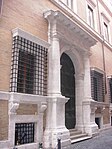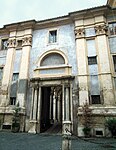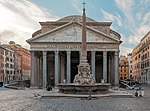Santa Maria Maddalena
1699 establishments in Italy17th-century Roman Catholic church buildings in ItalyBaroque architecture in RomeChurches of Rome (rione Colonna)Roman Catholic churches completed in 1699 ... and 1 more
Roman Catholic churches in Rome

The Santa Maria Maddalena is a Roman Catholic church in Rome, named after Saint Mary Magdalene. It is located on the Via della Maddalena, one of the streets leading from the Piazza della Rotonda in the Campo Marzio area of historic Rome. It is the regional church for the people of Abruzzo.
Excerpt from the Wikipedia article Santa Maria Maddalena (License: CC BY-SA 3.0, Authors, Images).Santa Maria Maddalena
Piazza della Maddalena, Rome Municipio Roma I
Geographical coordinates (GPS) Address External links Nearby Places Show on map
Geographical coordinates (GPS)
| Latitude | Longitude |
|---|---|
| N 41.900073 ° | E 12.476724 ° |
Address
Santa Maria Maddalena in Campo Marzio
Piazza della Maddalena
00186 Rome, Municipio Roma I
Lazio, Italy
Open on Google Maps









